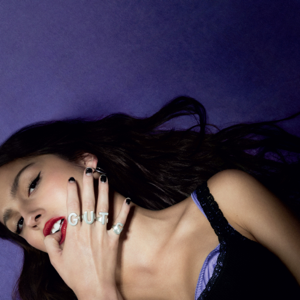Simpler book covers attempt to grab onto modernizing readership
Scrolling down the New York Times’ Fiction Bestseller List for 2019 will reveal two things: a) a selection of incredibly diverse titles, and b) a very similar style being used for a great majority of the covers on the list.
Despite the all-too-familiar expression, the cover ends up being the first frame of judgement for many readers when deciding what book to pick up, especially with the myriad of other forms of entertainment available to consumers. As a result, visual representation of the work inside has become increasingly important for a previously nonvisual art.
“A book cover tells me what genre the book is, as well as its quality,” junior Madeline Dracopoulos said. “If the cover is a good piece of artwork, that generally means the author has original plot ideas.”
If you venture into a modern bookstore, the themes of book covers have changed drastically over the last decade. Cover designers today opt for less photo-realistic images and more bolded fonts with bright colors, ditching the former dramatic text overlayed over a picture.
“‘The Poet X’ has a book cover that’s really cool. It has the protagonist’s face, with these pinks and peaches and yellows over it,” english teacher Breanne Makovec said. “I think it’s the colors that really draw me to the books, rather than what the actual pictures are.”
Best-selling books of late, like the current chart-topper “American Dirt”, the second place-holder “Where the Crawdads Sing” and the fourth place-holder “Little Fires Everywhere” all employ this growingly popular theme of sans-serif fonts [fonts without any extending features from the base of the letters] expanded over brightly colored, graphic backgrounds.
“Sans Serifs are used to show a simpler, more modern approach,” graphic design teacher Kristin Oversmith said. “The titles end up being more dramatic, but do that while maintaining a clean design.”
These trends can be directly tied into the trends being seen in the graphic design world. It’s no secret that minimalism is the way most new-age brands are trying to move in; from Apple to The Washington Post, everyone wants to limit the amount of words that’s on consumers’ screens to make it more digestible and appealing. But for a form of media as lengthy as fiction, it seems like a slight oxymoron to associate it with such simplicity.
“I think it has all to do with the more modern look,” Oversmith said. “Interior design, too, is getting simpler, and everything’s simplifying down to the bare minimum. So I think by simplifying the fonts and using bright colors, those designs are mirroring our society and its trends.
Even veteran authors like Stephen King have begun adopting these trends with their books. His newest novel, “The Institute,” utilizes a similar look. So perhaps it is in the best interest of book cover designers in making their reads appear less daunting and more accessible for readers who may be weary of picking up a book and spending a great deal of time with it, in an age where such isolating activities are few and far between.
“People who can’t find time to read have one of two problems,” Dracopoulos said. “They either prioritize other activities over reading, like social media or TV, or they truly have very busy lives.”
Whether or not readers enjoy the new trends, it’s safe to say that adjusting book cover design to get as many people invested in books as possible is a beneficial action. Literature remains one of the few forms of art that weathers whirlwinds of change and stands tall over hundreds of years. The genres change, as does the vernacular and the styles, but the form it takes as words on a page has remained constant. As such, any way to continue on the interest in such an art is well-received.
“As a reader, I appreciate the added complexity that a cover image can add,” Makovec said. “I like trying to figure out why it’s there and why an author chose it to represent their work.”








